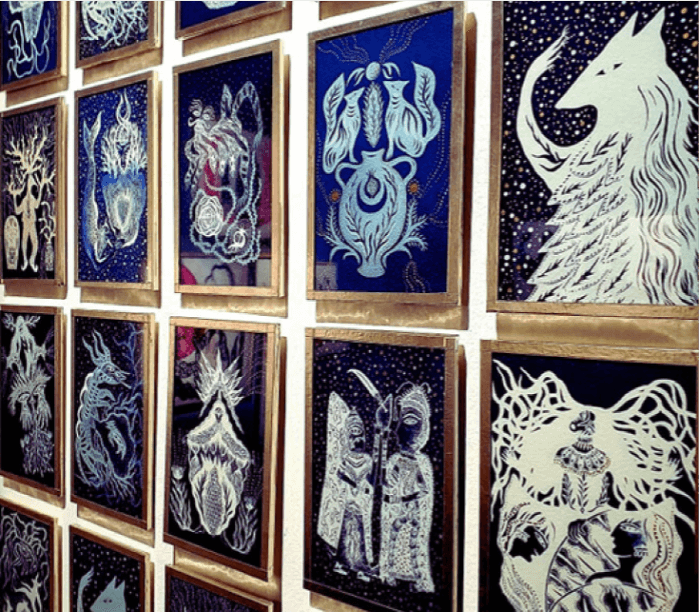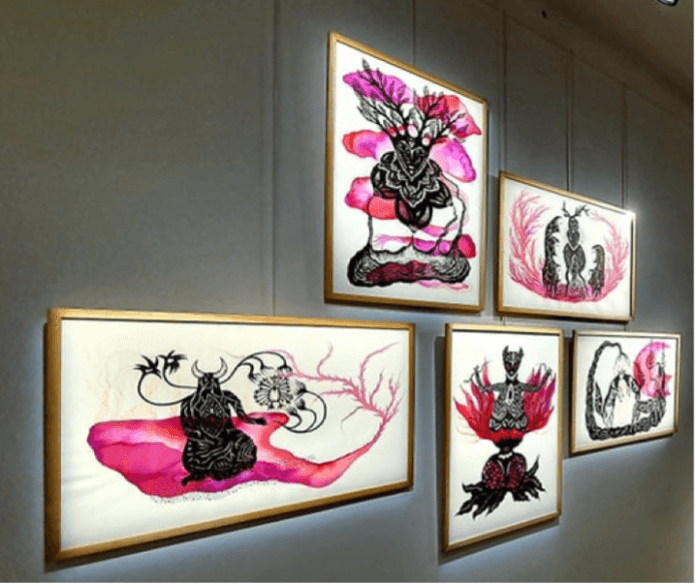ÉCLOSION exhibition – Ayda-Su Nuroglu
Artist Ayda-Su Nuroglu invites us to her exhibition entitled “ÉCLOSION” which is taking place from 19 April to 26 May 2024 at the Chapelle des Pénitents in Aniane, France.
Her work mixes screen printing, the cyanotype process, painting, drawing, collage and embroidery in a dynamic experimentation with graphics. Her creations are the expression of a quest that takes her into the ancient and today’s world to give free rein to her imagination. Her aim is to spur the viewer to question their relationship to the world, to spirituality, nature…
Ayda-Su Nuroglu, a French-Turkish artist
Ayda-Su was born in France in 1982. She spent her teenage years in Turkey, in Istanbul where she still returns regularly. She is a graduate of Beaux-Arts Bourges, from where she went on to train in printmaking techniques at the École des Beaux-Arts de Paris. She also holds a master’s degree in Art Therapy from the Faculty of Medicine in Tours.
After 20 years of Parisian life, she decided to move her studio to the Hérault valley in south-western France. She is actively involved in local life in Aniane and works as a plastic artist and art interventionist in visual arts.
She is a member of the Fondation Taylor, the Maison de la Gravure de la Méditerranée, the Collectifs de l’Atelier aux Lilas pour l’Estampe et la Typographie, the Artistes de Ménilmontant and the Compagnie des Toupies.

© Ayda-Su Nuroglu. TERRA MADRE series
Cyanotypes on ARCHES® Aquarelle paper
One of the many artistic techniques used by Ayda-Su Nuroglu is the cyanotype process. She particularly favours ARCHES® Aquarelle 640 gsm paper for her cyanotypes.
The cyanotype process is an old photographic process which produces monochrome cyan blue photographic prints. This technique, developed in 1842 by English scientist and astronomer John Frederick William Herschel, uses ferric ammonium citrate and potassium ferricyanide. The light-sensitive compound obtained by mixing these two chemicals is applied with a paintbrush in an even coat on a sheet of paper. After drying in a dark room, the coated paper is a yellowish to moss green colour. The Prussian blue colour only appears after the paper is exposed to ultraviolet light, when the excess, unexposed iron is eliminated by rinsing the paper with running water. The lighter image is produced by contact with a negative or a photogram. The picture is then left to dry in the open air.

© Ayda-Su Nuroglu. Detail from the EX-VOTO series





